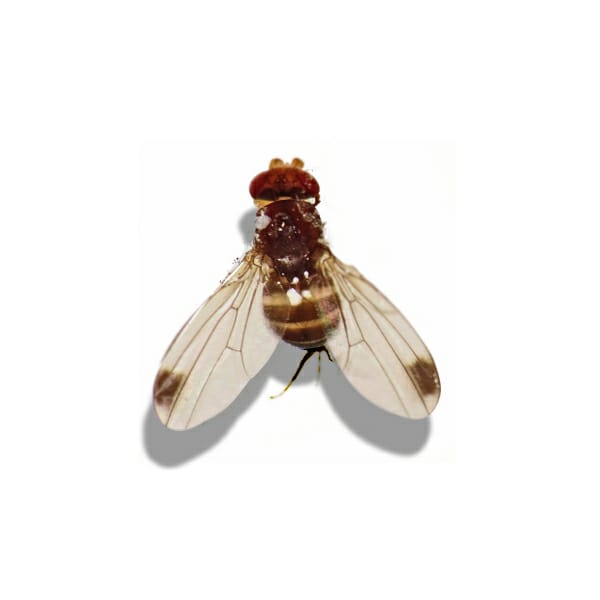Tephritid Fruit Flies, Bactrocera invadens
Bactrocera invadens is the Latin name given to tephritid fruit flies in Africa.
These fruit flies, often confused with Bactrocera dorsalis, were introduced to East Africa from Sri Lanka and subsequently invaded practically the whole of Sub-Saharan Africa, hence the species name “invadens”. (Source: Wikipedia). In West and Central Africa Bactrocera invadens is highly polyphagous, infesting wild and cultivated fruits of at least 46 species from 23 plant families with guava (Psidium spp.), mango (Mangifera spp.), and citrus (spp.), and the wild hosts tropical almond (Terminalia catappa L.), African wild mango (Irvingia gabonensis (Aubry-Lecomte) Baill.), and sheanut (Vitellaria paradoxa C.F.Gaertn). Bactrocera invadens occurs in 22 countries of West and Central Africa, with records for Angola, Central African Republic, the Congo, DR Congo, Equatorial Guinea, Gabon, Gambia, Guinea Bissau, Mali, Mauritania, Niger, and Sierra Leone. The pest has adapted to a wide range of ecological and climatic conditions extending from low land rainforest to dry savanna. Because of its highly destructive and invasive potential, B. invadens poses a serious threat to horticulture in Africa if left uncontrolled. Moreover, the presence of this quarantine pest causes considerable restrictions on international trade of affected crops. (Source: Bactrocera invadens (Diptera: Tephritidae), a New Invasive Fruit Fly Pest for the Afrotropical Region: Host Plant Range and Distribution in West and Central Africa).


